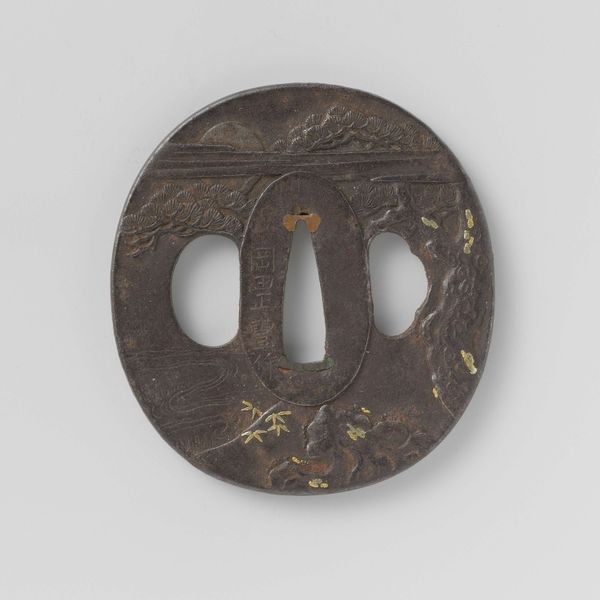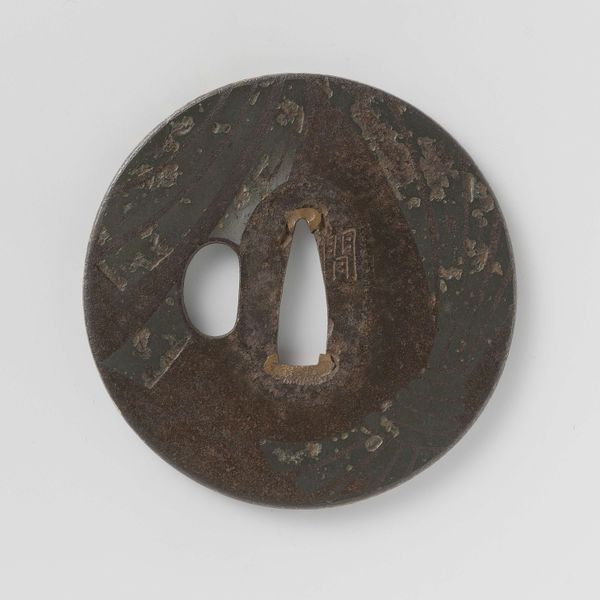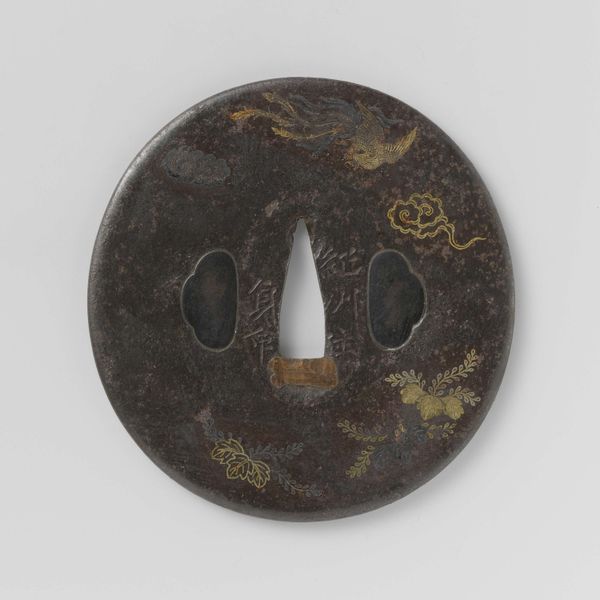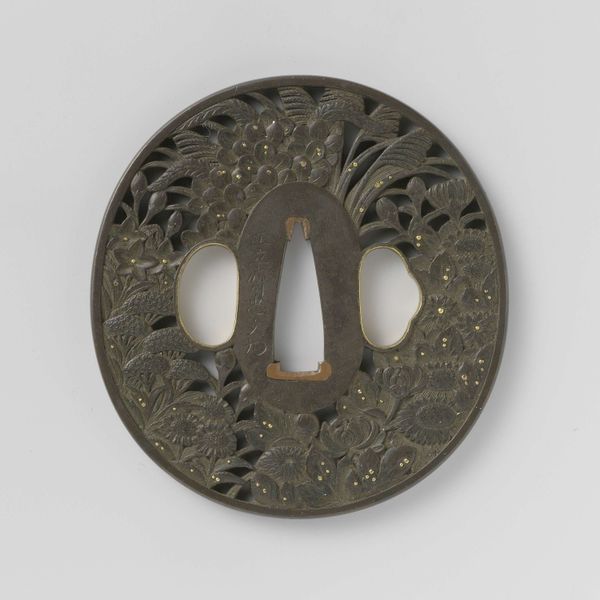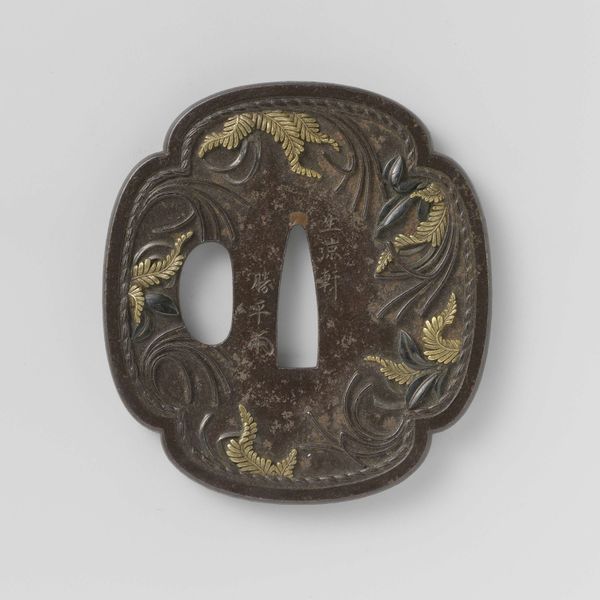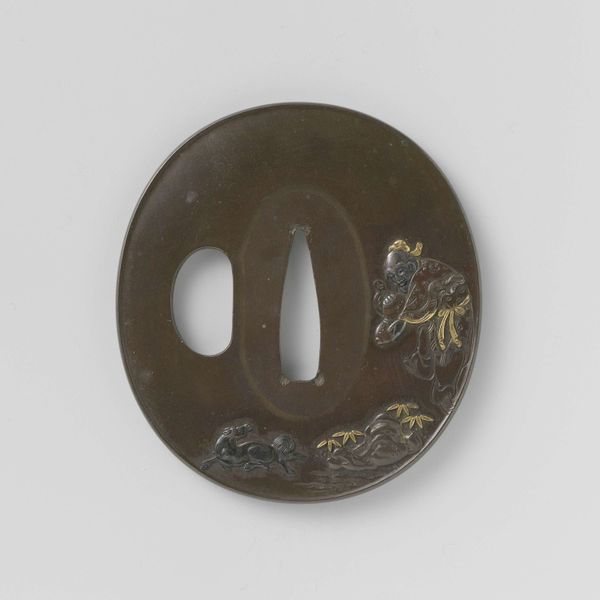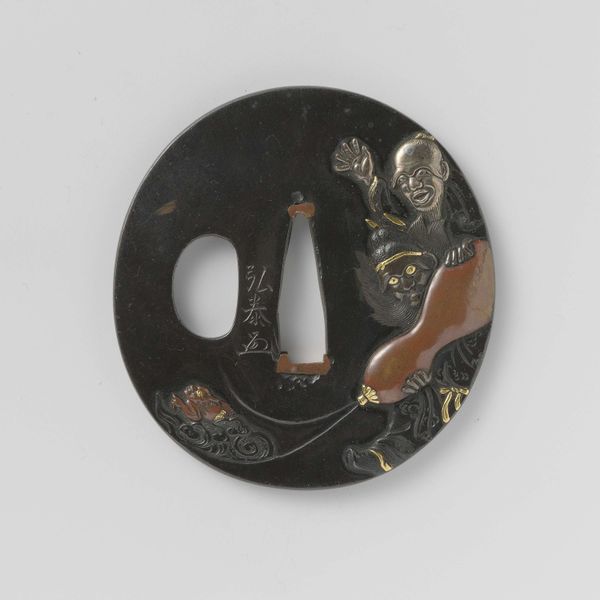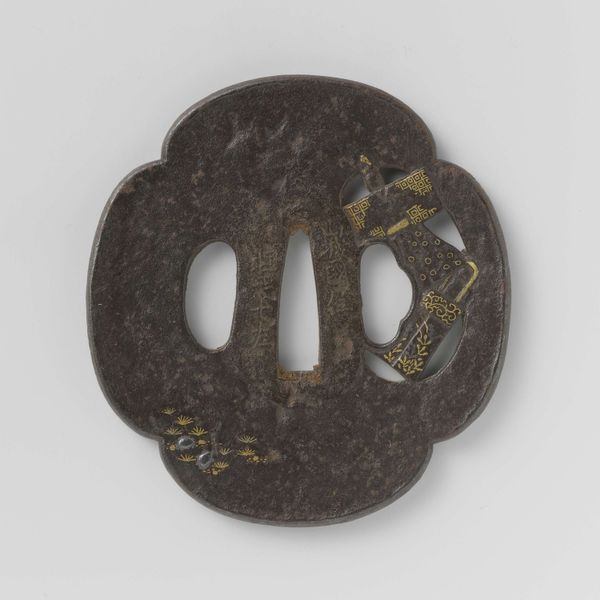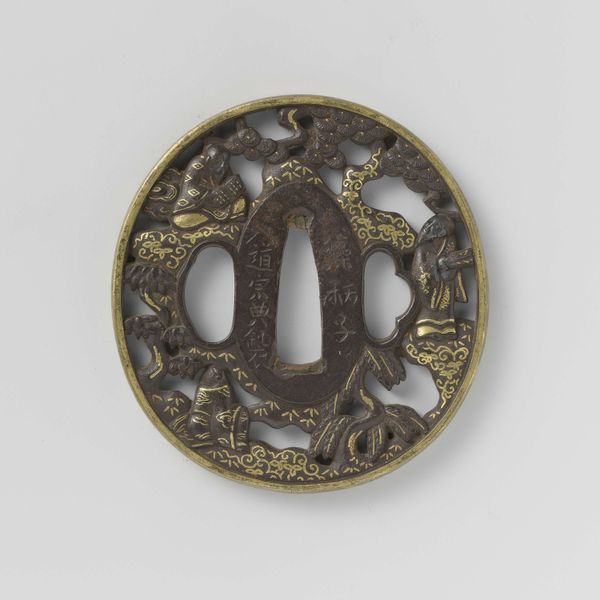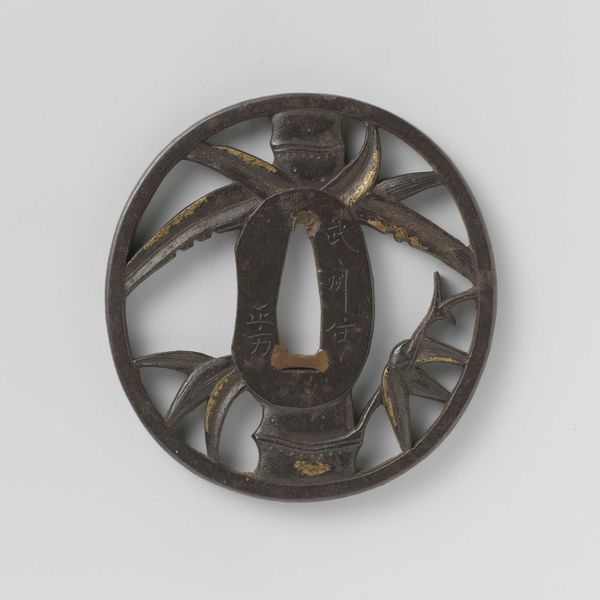
metal, bronze
#
metal
#
asian-art
#
bronze
Dimensions: height 7.3 cm, width 6.5 cm
Copyright: Rijks Museum: Open Domain
This hand guard, or tsuba, was crafted by Eijusai Kagenori, though we don't know exactly when. It offers a glimpse into the world of the samurai and the intricate role of weaponry as both functional and aesthetic objects. Hand guards like this weren't just about protection; they were canvases that reflected the samurai's identity, beliefs, and status. The delicate gold and silver inlays, depicting natural scenes, speak to a deep connection with nature, a common theme in Japanese art and philosophy. The choice of imagery, like birds or landscapes, might have symbolized personal aspirations or allegiances, subtly communicating one's position within the rigid samurai hierarchy. These hand guards also give us insight into the craftsmanship and artistry valued in samurai culture. The level of detail suggests a society that prized skill and beauty, even in objects of war. Think about the stories this object could tell, not just of battles fought, but of the quiet moments of reflection.
Comments
No comments
Be the first to comment and join the conversation on the ultimate creative platform.
